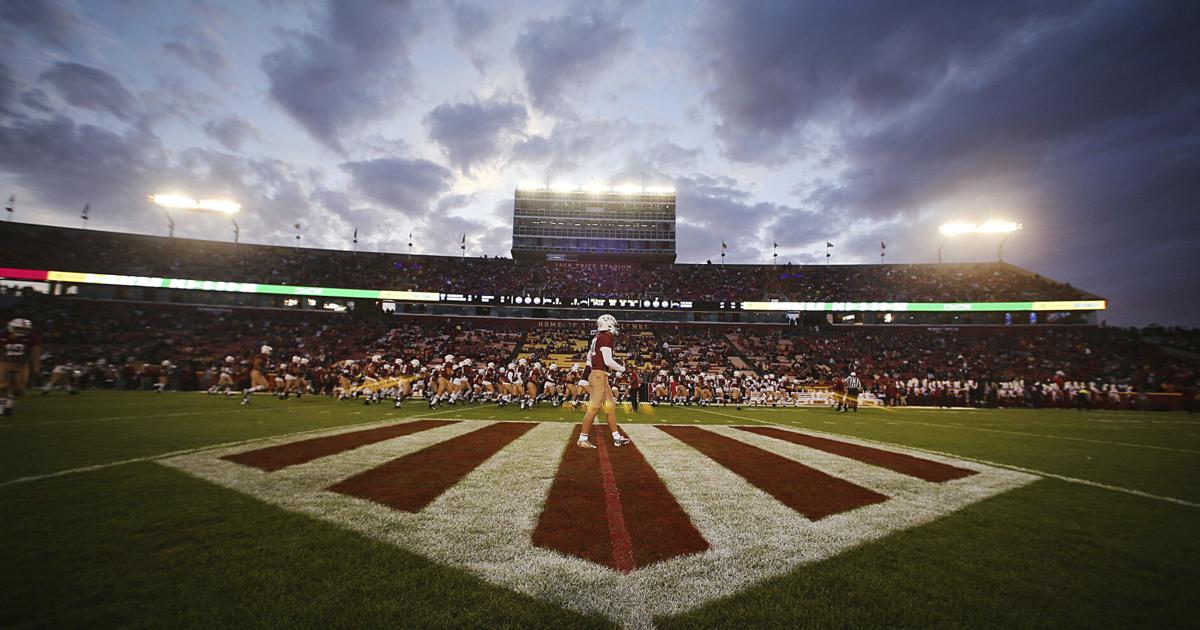NIL
Auburn catcher Cale Stricklin plans to enter NCAA transfer portal
Auburn catcher Cale Stricklin plans to enter the NCAA transfer portal, he announced on Monday. Stricklin broke the news of his departure on Twitter. Stricklin, who is the son of former Georgia coach Scott Stricklin, spent two years with the Tigers. He appeared in 20 games. “Thank you Auburn University for the past 2 years,” […]
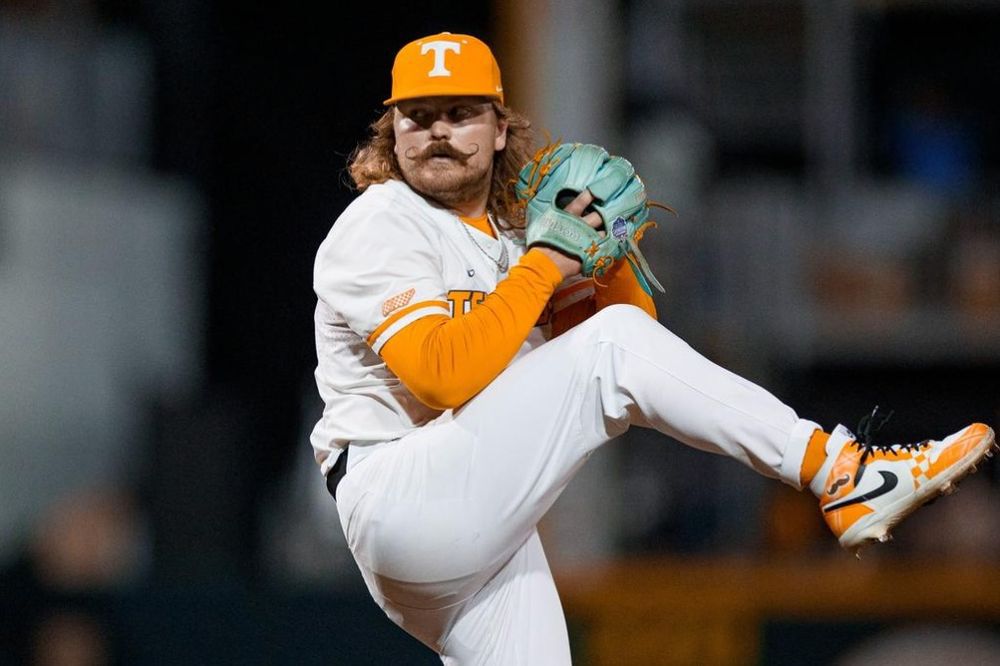


Auburn catcher Cale Stricklin plans to enter the NCAA transfer portal, he announced on Monday. Stricklin broke the news of his departure on Twitter.
Stricklin, who is the son of former Georgia coach Scott Stricklin, spent two years with the Tigers. He appeared in 20 games.
“Thank you Auburn University for the past 2 years,” Stricklin wrote. “[W]ith that being said I will be entering into the transfer portal.”
During the 2025 campaign, Stricklin saw just four at-bats in six appearances. He did not record a hit, though he walked once and was hit by a pitch.
Cale Stricklin saw more extensive action as a freshman in 2024, when he appeared in 14 games. He saw 33 at-bats and hit .273, notching one double and five RBI in his plate appearances. He also reached base eight times via walk and three times via hit by pitch.
Prior to enrolling at Auburn, Stricklin played at North Oconee High School in Georgia and was rated by Perfect Game as a top-300 player in the class, including the No. 35 overall player and No. 1 catcher in Georgia. He hit .474 as a senior.
Auburn falls in Super Regional
The Cale Stricklin news comes after a tough weekend for Auburn. The Tigers were eliminated from the postseason in the Auburn Super Regional by Coastal Carolina.
Coastal Carolina won a nail-biter in the opener 7-6, a game that went well into the night thanks to a weather delay midway through the contest. Auburn rallied late, but the Tigers were unable to seal the deal after forcing extra innings.
In the end, a Caden Bodine home run in the top of the 10th put the Chanticleers one win away from the College World Series. They’d get the job done the following day.
Auburn dropped Game 2 in the Super Regional series 4-1. The Tigers initially jumped out to a 1-0 lead, then the bats went cold as the Chanticleers rallied to take the game.
On3’s Steve Samra also contributed to this report.
NIL
Jay Bilas shares how NIL has driven down value of second round in NBA Draft
NIL has affected everything in college sports since it began nearly four years ago in 2021. The pros have since felt those effects as well, specifically in their drafts, with how good some players have it in collegiate athletics now. Jay Bilas explained the impact of name, image, and likeness on the NBA Draft going […]
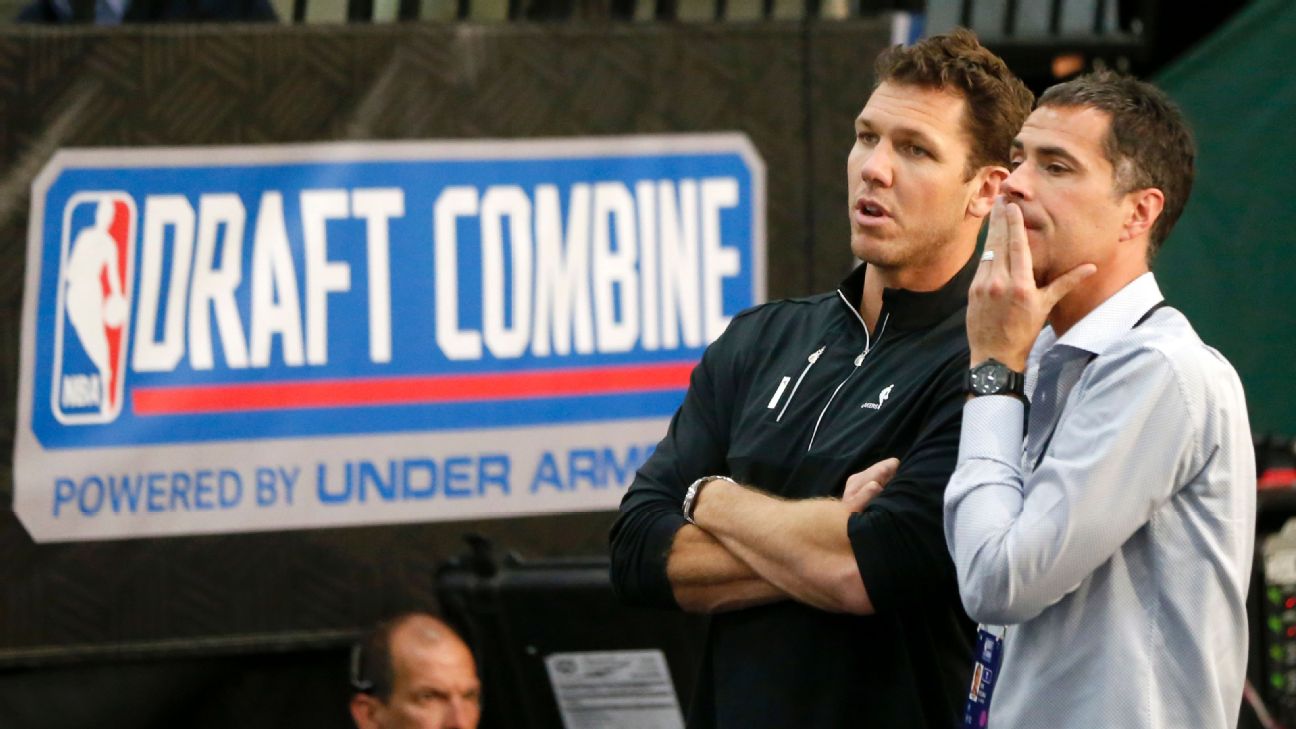
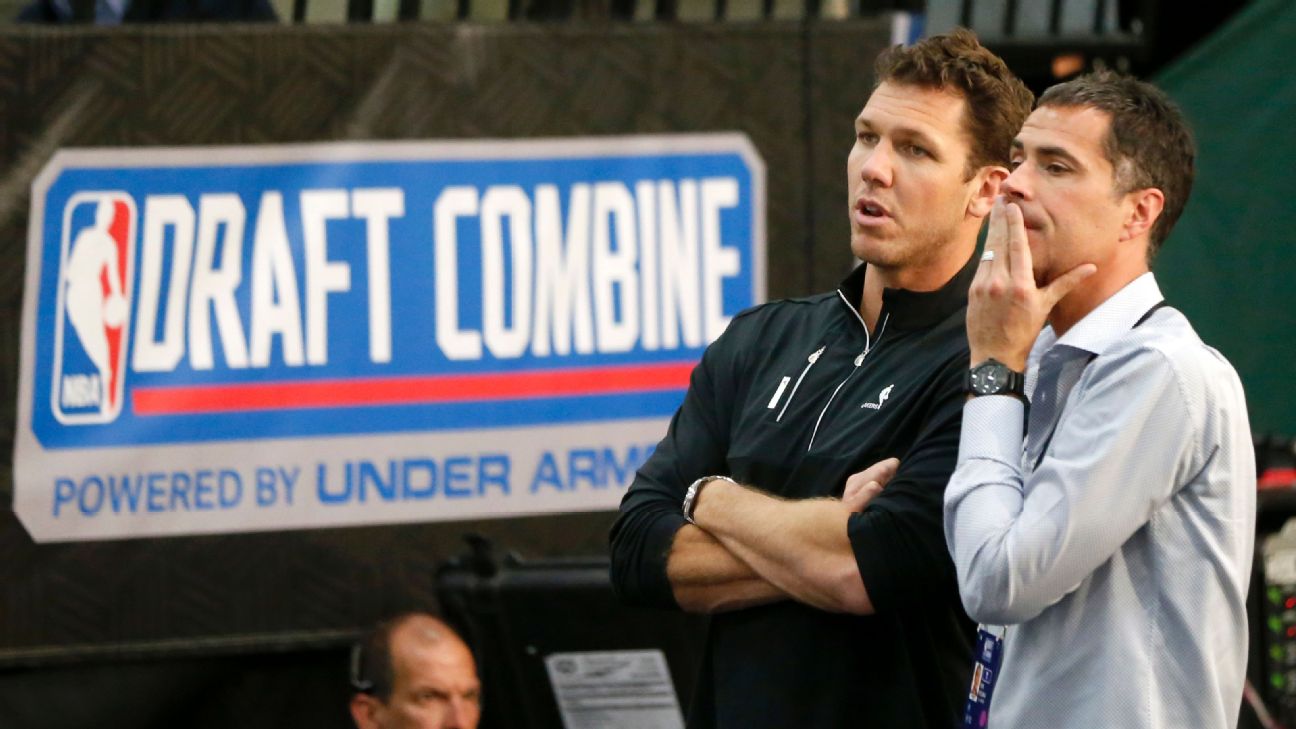
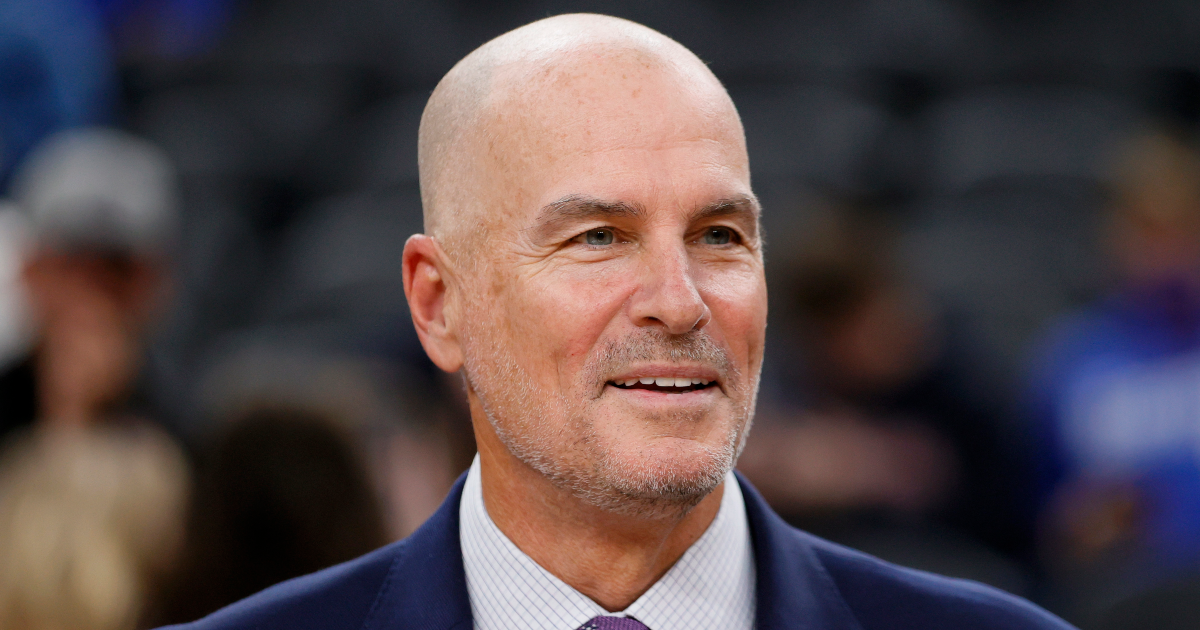
NIL has affected everything in college sports since it began nearly four years ago in 2021. The pros have since felt those effects as well, specifically in their drafts, with how good some players have it in collegiate athletics now.
Jay Bilas explained the impact of name, image, and likeness on the NBA Draft going into tonight’s second round coverage while on ‘The Pat McAfee Show’ on Thursday. He felt it had steadily decreased the value that teams can find in the second round with prospects who have remaining eligibility that could be selected in those spots, deciding to withdraw their names and return to college rather than be picked in the association.
“One thing you’re seeing with NIL now? Players are not only going to college. They’re staying in college longer,” Bilas said. “The second round is probably not – I haven’t like, you know, done this with a microscope. But the second round this year is probably not as good as the second round, like, two or three years ago because a lot of second-round picks are guys that would’ve come out two or three years ago, are staying in school because they’re going to make way more money staying in school.”
“If they’re not going to be first-round picks, they’re staying in (college),” Bilas said.
As many as 106 players, whether from college or international, entered their names to be early-entry candidates as part of this draft. Then, by the withdrawal deadline for college players on May 28th, 50 pulled their names out of this class.
Among the most notable on that list were Houston’s Milos Uzan, Duke’s Isaiah Evans, Florida’s Alex Condon, Boogie Fland, and Reuben Chinyelu, Kentucky’s Otega Oweh and Jaland Lowe, Auburn’s Tahaad Pettiford, Alabama’s Labaron Philon, Arkansas’ Karter Knox, and NC State’s Darrion Williams. Those are several players who will make the difference for potential national title contenders. The rest of the names still then include ones who will absolutely affect their respective programs as well in ’25-’26.
Several of those names could have been or would have been selected tonight in the second round, or maybe even last night in the first round for some. However, name, image, and likeness has made it a much different decision-making process considering what those players could make over a year back in college than their first as rookies in the NBA.
First round picks make several million dollars on guaranteed deals as rookies, but second-round picks aren’t on the same wage scale, meaning less guaranteed money for contracts closer to the minimum or ones for a two-way signing. That’s the same value or less than some of them would make back in college, based on the compensation at their respective programs.
There are still good players to be found by franchises in the second round, with that on display tonight as 29 more selections will be made. Still, as compared to previous drafts in years past, there may be less talent available this year and in ones moving forward, as a result of NIL.
NIL
Jay Bilas shares how NIL has driven down value of second round in NBA Draft
NIL has affected everything in college sports since it began nearly four years ago in 2021. The pros have since felt those effects as well, specifically in their drafts, with how good some players have it in collegiate athletics now. Jay Bilas explained the impact of name, image, and likeness on the NBA Draft going […]

NIL has affected everything in college sports since it began nearly four years ago in 2021. The pros have since felt those effects as well, specifically in their drafts, with how good some players have it in collegiate athletics now.
Jay Bilas explained the impact of name, image, and likeness on the NBA Draft going into tonight’s second round coverage while on ‘The Pat McAfee Show’ on Thursday. He felt it had steadily decreased the value that teams can find in the second round with prospects who have remaining eligibility that could be selected in those spots, deciding to withdraw their names and return to college rather than be picked in the association.
“One thing you’re seeing with NIL now? Players are not only going to college. They’re staying in college longer,” Bilas said. “The second round is probably not – I haven’t like, you know, done this with a microscope. But the second round this year is probably not as good as the second round, like, two or three years ago because a lot of second-round picks are guys that would’ve come out two or three years ago, are staying in school because they’re going to make way more money staying in school.”
“If they’re not going to be first-round picks, they’re staying in (college),” Bilas said.
As many as 106 players, whether from college or international, entered their names to be early-entry candidates as part of this draft. Then, by the withdrawal deadline for college players on May 28th, 50 pulled their names out of this class.
Among the most notable on that list were Houston’s Milos Uzan, Duke’s Isaiah Evans, Florida’s Alex Condon, Boogie Fland, and Reuben Chinyelu, Kentucky’s Otega Oweh and Jaland Lowe, Auburn’s Tahaad Pettiford, Alabama’s Labaron Philon, Arkansas’ Karter Knox, and NC State’s Darrion Williams. Those are several players who will make the difference for potential national title contenders. The rest of the names still then include ones who will absolutely affect their respective programs as well in ’25-’26.
Several of those names could have been or would have been selected tonight in the second round, or maybe even last night in the first round for some. However, name, image, and likeness has made it a much different decision-making process considering what those players could make over a year back in college than their first as rookies in the NBA.
First round picks make several million dollars on guaranteed deals as rookies, but second-round picks aren’t on the same wage scale, meaning less guaranteed money for contracts closer to the minimum or ones for a two-way signing. That’s the same value or less than some of them would make back in college, based on the compensation at their respective programs.
There are still good players to be found by franchises in the second round, with that on display tonight as 29 more selections will be made. Still, as compared to previous drafts in years past, there may be less talent available this year and in ones moving forward, as a result of NIL.
NIL
College football 26 toughest stadium rankings says no to Hogs, yes to more cowbell
When EA Sports released its first college football video game in over a decade, Donald W. Reynolds Razorback Stadium ranked in the top 25 hardest home-field advantages in the game. In College Football 26, that’s no longer the case. Arkansas football dropped from College Football 26 toughest places to play Arkansas didn’t make the cut […]
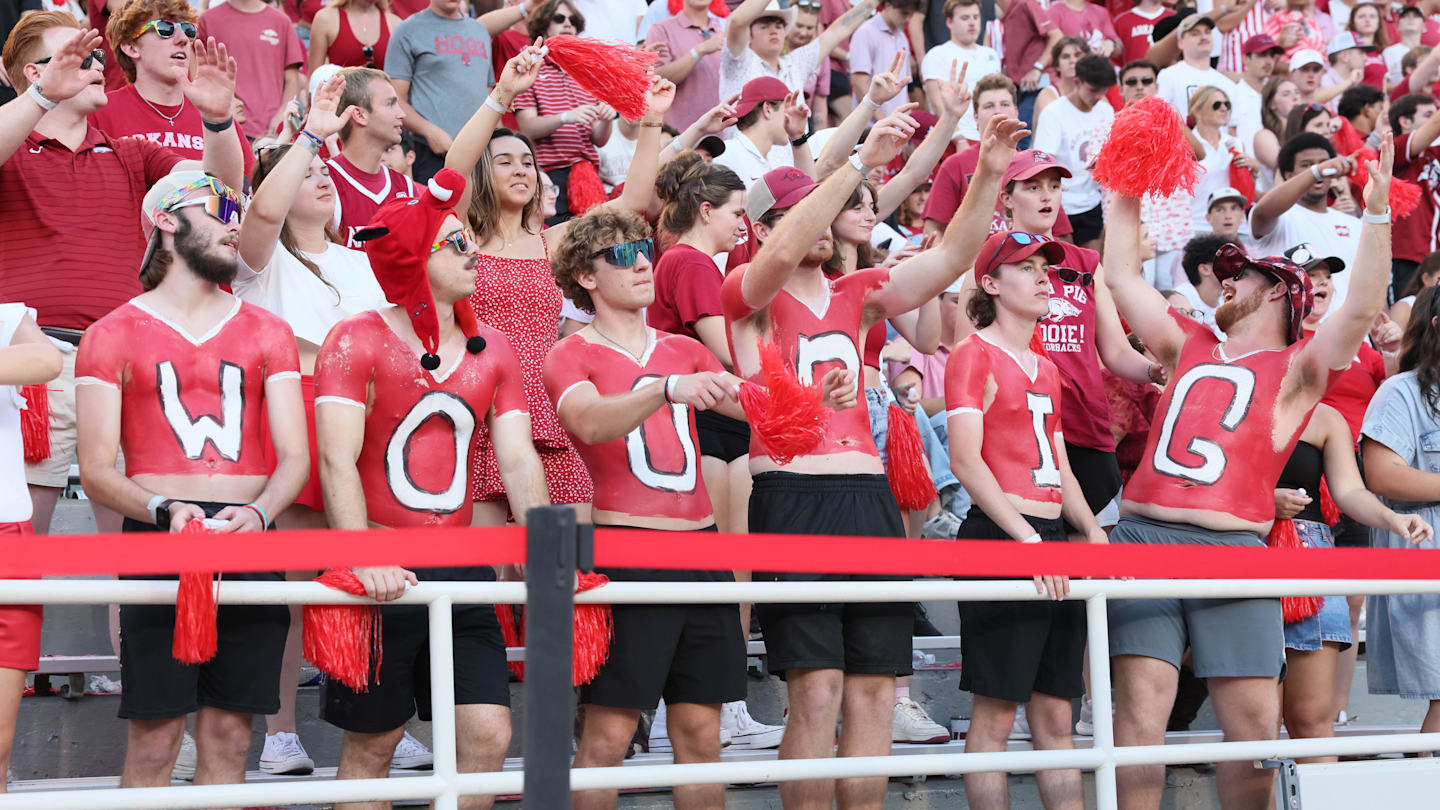
When EA Sports released its first college football video game in over a decade, Donald W. Reynolds Razorback Stadium ranked in the top 25 hardest home-field advantages in the game. In College Football 26, that’s no longer the case.
Arkansas football dropped from College Football 26 toughest places to play
Arkansas didn’t make the cut this year, but to be fair, it was shocking they made it in the first place. Over the last ten seasons, Arkansas has accumulated a home record just above .500 (35-34). Still, it wasn’t the most criticized choice, with Texas A&M coming in first place last year. Fans pointed out that the Aggies had recently lost to Appalachian State when the list was released, and it appears that EA Sports has righted their wrongs. Kyle Field now sits at No. 11.
However, the new ranking has its share of problems. The last five are especially heinous. Norte Dame comes in at No. 21, which is completely ridiculous. The Fighting Irish may be overrated most seasons, but they’re still excellent and have only had 12 losses in Notre Dane since the 2015-16 season.
It’s completely unrealistic to sandwich Notre Dame Stadium between Rice-Eccles Stadium (Utah) and Carter-Finely Stadium (NC State). No. 2022, 23, and 25 are off-the-wall picks, too, but for a different reason. With NC State at No. 22 and Oklahoma State at No. 23, they don’t exactly scream “terrifying home environments.”
Sure, Cowboy fans are basically on top of the players on the sideline, but Arkansas, which is annually a bottom-third SEC, nearly wiped the floor with them in Stillwater until the Hogs shot themselves in the foot. And OK State fans can’t quite claim the environment helped because Arkansas continued to do it all season, including at home.
Mississippi State comes in at No. 25, but let’s be real—it’s just because of the cowbells. EA Sports has taken too much advice from Christopher Walken. We, in fact, don’t need more cowbells. Davis Wade Stadium is hard to play in because opposing players can’t hear themselves talk, but that hasn’t stopped them from beating Mississippi Stat. The Bulldogs have a slightly higher home winning percentage (.588) than Arkansas.
Why does it matter?
In College Football 26, home-field advantage isn’t just cosmetic—it’s game-changing. Just like in College Football 25, EA Sports is turning up the intensity by making crowd energy and stadium atmosphere directly impact gameplay, only more so for its newest edition.
Players on the road will face a wave of immersive challenges like distorted play art, jittery screen shakes, blurred routes, and drops in confidence and composure. The rankings now carry real weight, as playing in a top-tier environment could rattle even the most composed athletes, just like on a real Saturday in the fall.
College Football 26 toughest places to play top 25 rankings
- Tiger Stadium: LSU
- Beaver Stadium: Penn State
- Ohio Stadium: Ohio State
- Stanford Stadium: Georgia
- Bryant -Denney Stadium: Alabama
- Memorial Stadium: Clemson
- Ben Hill Griffin Stadium: Florida
- Gaylord Family-Oklahoma Memoria Stadium: Oklahoma
- Autzen Stadium: Oregon
- Michigan Stadium: Michigan
- Kyle Field: Texas A&M
- Neyland Stadium: Tennessee
- Darrel K. Royal Texas Memorial Stadium: Texas
- Doak S. Campbell Stadium: Florida State
- Camp Randall Stadium: Wisconsin
- Williams-Brice Stadium: South Carolina
- Jordan-Hare Stadium: Auburn
- Husky Stadium: Washington
- Kinnick Stadium: Iowa
- Rice-Eccles Stadium: Utah
- Notre Dame Stadium: Notre Dame
- Carter-Finley Stadium: NC State
- Boon Pickens Stadium: OK State
- Spartan Stadium: Michigan State
- Davis Wade Stadium: Mississippi State
NIL
LSU baseball adds elite relief pitcher from the transfer portal
LSU baseball continued its transfer portal reload on Thursday. Less than a week after winning a national championship, Jay Johnson and the Tigers earned a commitment from North Dakota State transfer pitcher Danny Lachenmayer. Lachenmayer is the third transfer addition of the cycle for LSU, joining infielders Seth Darder and Brayden Simpson. Lachenmayer, a lefty, […]
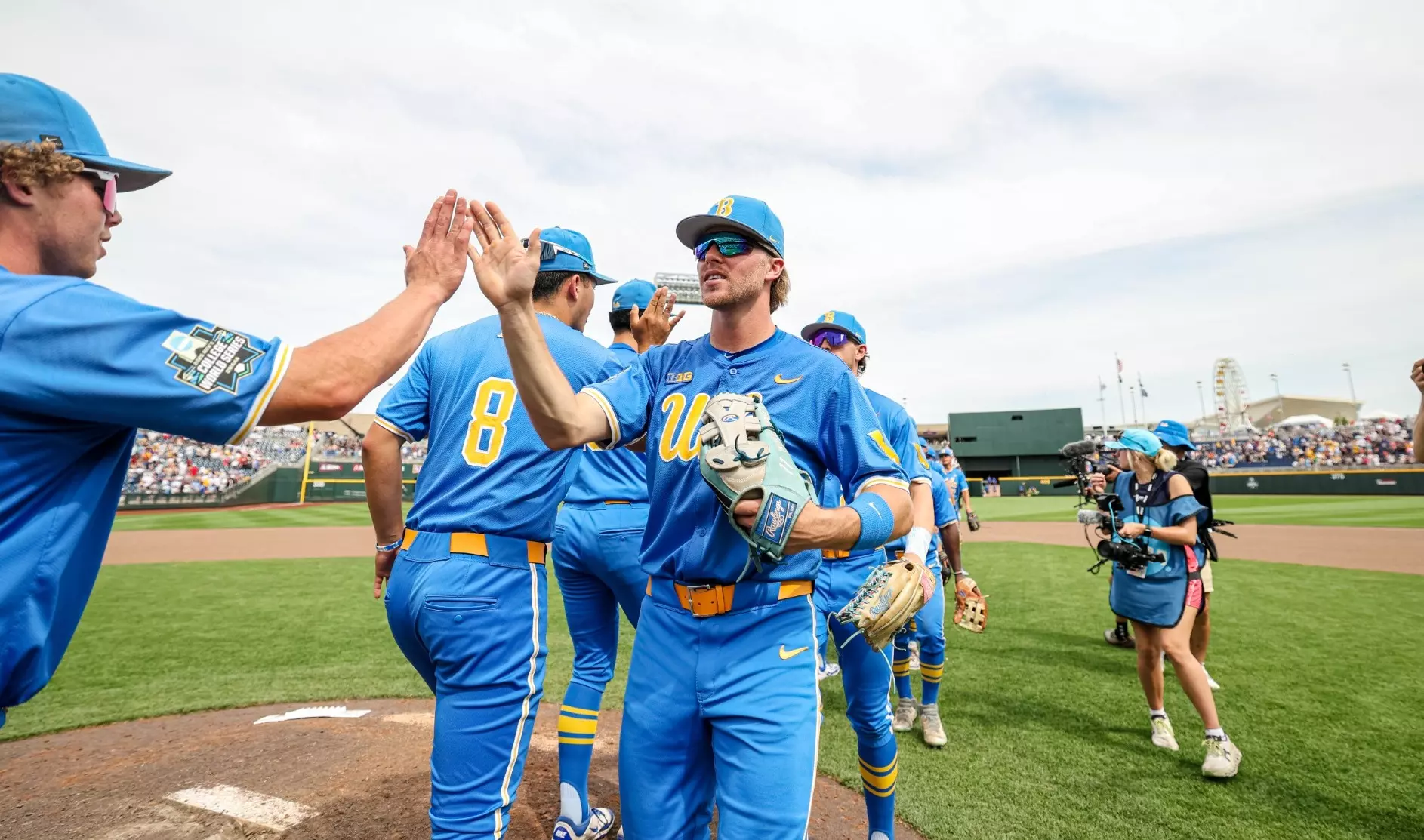


LSU baseball continued its transfer portal reload on Thursday. Less than a week after winning a national championship, Jay Johnson and the Tigers earned a commitment from North Dakota State transfer pitcher Danny Lachenmayer.
Lachenmayer is the third transfer addition of the cycle for LSU, joining infielders Seth Darder and Brayden Simpson.
Lachenmayer, a lefty, worked as a reliever for NDSU in 2024. The Minnesota native tossed 38 innings with a 2.37 ERA. He was a strikeout machine, totaling 56 K’s out of the pen. Lachenmayer allowed just 10 earned runs all year and recorded nine saves.
LSU’s 2026 bullpen will look different as Lachenmayer fills a key need. LSU is projected to bump Casan Evans into the starting rotation and lose Chase Shores to the MLB Draft. Zac Cowan also has a decision to make regarding the draft, and even if Cowan is back, there’s a strong chance he’s a starter. Lachenmayer gives Johnson and the Tigers a high-leverage arm with proven experience.
North Dakota State made the NCAA Tournament this season, and Lachenmayer got to pitch in the regional, throwing 3.2 scoreless innings vs. quality competition.
Lachenmayer broke the news with a post on social media.
NIL
Brent Blum Named Director of NIL Development for Iowa State
State AlabamaAlaskaArizonaArkansasCaliforniaColoradoConnecticutDelawareFloridaGeorgiaHawaiiIdahoIllinoisIndianaIowaKansasKentuckyLouisianaMaineMarylandMassachusettsMichiganMinnesotaMississippiMissouriMontanaNebraskaNevadaNew HampshireNew JerseyNew MexicoNew YorkNorth CarolinaNorth DakotaOhioOklahomaOregonPennsylvaniaRhode IslandSouth CarolinaSouth DakotaTennesseeTexasUtahVermontVirginiaWashingtonWashington D.C.West VirginiaWisconsinWyomingPuerto RicoUS Virgin IslandsArmed Forces AmericasArmed Forces PacificArmed Forces EuropeNorthern Mariana IslandsMarshall IslandsAmerican SamoaFederated States of MicronesiaGuamPalauAlberta, CanadaBritish Columbia, CanadaManitoba, CanadaNew Brunswick, CanadaNewfoundland, CanadaNova Scotia, CanadaNorthwest Territories, CanadaNunavut, CanadaOntario, CanadaPrince Edward Island, CanadaQuebec, CanadaSaskatchewan, CanadaYukon Territory, Canada Zip Code Country United States of […]
NIL
Arizona State AD Graham Rossini commits to retain all varsity sports
Arizona State athletic director Graham Rossini discusses the changing landscape in college sports Thursday at the Walter Cronkite School of Journalism and Communication. (Photo by Truitt Robinson/Cronkite News) PHOENIX – Arizona State athletic director Graham Rossini was adamant that the turbulent collegiate landscape won’t negatively impact the university. “We want all 26 of our sports […]



Arizona State athletic director Graham Rossini discusses the changing landscape in college sports Thursday at the Walter Cronkite School of Journalism and Communication. (Photo by Truitt Robinson/Cronkite News)
PHOENIX – Arizona State athletic director Graham Rossini was adamant that the turbulent collegiate landscape won’t negatively impact the university.
“We want all 26 of our sports to be able to continue to grow and thrive in this environment,” Rossini said Thursday.
“We’ve not had a conversation about moving off that.”
It’s a sentiment that a decade ago would have been commonplace for any top collegiate leader.
But with the recent House v. NCAA $2.8 billion settlement dispersing $20.5 million to each NCAA member school for direct athlete payment, Rossini’s commitment is not made without conviction.
“We no longer have 26 sports that operate largely like independent contractors,” Rossini said in a wide-ranging interview about the landscape of college athletics at the Walter Cronkite School of Journalism and Mass Communication. “They’re connected, they’re collaborating, they’re pushing each other in ways that are healthy and competitive.
“I get no more satisfaction than being on our head coaching group text.”
For the Big 12, its member schools will be empowered to carry out this athlete payment through a PayPal partnership announced Thursday.
“Pay for play” has been regulated and given an avenue. On Tuesday, schools can begin doling out money, and Rossini said ASU’s payment schedule will roll out July 10.
High revenue sports including football and men’s basketball will be the “heaviest recipients” of revenue sharing, Rossini said, but that isn’t preventing lower revenue teams from receiving due support.
“There’s a pathway where eventually every athlete at ASU could be on some form of athletic aid,” Rossini said. “We’ve added operational budget to all 26 sports. … This isn’t really isolation around football and men’s basketball.
“They’re certainly heavily involved in the (revenue) share distribution, but all 26 have a place at the university and we’ve really tried to be as diligent and aggressive in resourcing all of them as best we can, certainly including the female athletes.”
Continuing ASU’s track record as an international pipeline is also top of mind for Rossini, who mentioned France’s Léon Marchand, a four-time gold medal winning swimmer, and Canada’s Luguentz Dort, a 2025 NBA Champion with the Oklahoma City Thunder.
“We want to give all these athletes the same opportunities that they’re accustomed to,” Rossini said.
ASU has increased the availability of athletic scholarships in every varsity sport and the university is “focused on program endowments” to navigate challenges and risks posed by revenue sharing, Rossini said.
Of the $20.5 million ASU was allotted for the 2025-26 academic year, $2.5 million has been reserved for athletic aid. With more than 200 scholarships added this year alone and ASU blowing past its settlement funding, Rossini was not shy about throwing out a call-to-action for Sun Devil faithful.
“Our scholarship investment is significant, but we’re convicted that it’s the right way to put our dollars into the department,” Rossini said. “So, the call-to-action for all Sun Devil fans who may love some of our Olympic sports is, ‘Hey, find a way to plug in. Find a way to support this team.’”
Citing about 350,000 ASU alumni spread across Maricopa County, Rossini said that there are many local “connection points” to the university, but the international branches that blossom have their own value.
“It just sharpens our focus because we’re a very international university,” Rossini said when asked about current travel restrictions. “I do think there’s enormous value at our institution where if we have a volleyball player from Latvia, or we also have a women’s tennis player from Latvia, we also have students from Latvia.”
As much as an international footprint is something that ASU embraces, Rossini reaffirmed the department’s commitment to in-state talent.
From Sun Devils football coach Kenny Dillingham sending out Willy Wonka-inspired “golden tickets” to several top Arizona recruits to women’s basketball coach Molly Miller coining the hashtag “pipeline to paradise,” Rossini said current and future students have much more to look forward to than just the desert climate.
He said joining the Big 12, and the national exposure that comes with that, has made the ASU brand both accessible from a viewership perspective and one that developing athletes will want to play within.
“That makes me feel good that people are seeing the value of the ASU experience,” Rossini said. “It’s not only about NIL or the selfish input that an individual would get. It’s about being part of something bigger than yourself.
“I think we’re starting to reap the benefit of that.”
Just looking at ASU football, Rossini said broadcasting its games on FOX and ESPN saw an increase of about 100% year-over-year viewership. If you add in the Peach Bowl, viewership improved 353%.
As unique as “Pac-12 After Dark” was for West Coast fans, Rossini said the concept was hurting marketing opportunities for the school. Despite a low profile opponent in Texas State this past football season, for example, he said the ESPN primetime slot on a Thursday night gave the nation an early peek at what turned into a College Football Playoff-bound ASU team.
“Everybody’s getting a chance to watch us,” Rossini said. “They’re not behind a paywall or a regional sports network. And so everything that we try to do this last year and moving forward is designed around building the brand of Sun Devil athletics.”
For any current or future ASU athlete, Rossini had a clear message: You won’t be forgotten.
“If you’re a storyteller, come raise your hand … and let’s illuminate these incredible storylines all throughout our department,” Rossini said.
“That’s how we’re going to make sure that our athletes aren’t forgotten.”
-

 Motorsports2 weeks ago
Motorsports2 weeks agoNASCAR Weekend Preview: Autódromo Hermanos Rodríguez
-

 Motorsports2 weeks ago
Motorsports2 weeks agoNASCAR Through the Gears: Denny Hamlin has gas, a border needs crossing, and yes, that’s a Hemi
-

 NIL3 weeks ago
NIL3 weeks agoShai Gilgeous
-

 Motorsports2 weeks ago
Motorsports2 weeks agoNASCAR Race Today: Mexico City start times, schedule and how to watch live on TV
-

 Health2 weeks ago
Health2 weeks agoGymnast MyKayla Skinner Claims Simone Biles 'Belittled and Ostracized' Her amid Riley …
-

 High School Sports3 weeks ago
High School Sports3 weeks agoHighlights of the Tony Awards
-
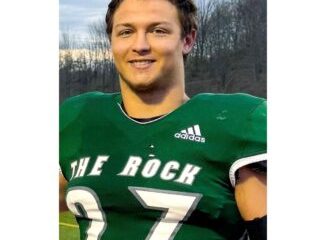
 Health3 weeks ago
Health3 weeks agoParents Create Fund in memory of son, raise awareness about suicide and mental health
-

 Professional Sports3 weeks ago
Professional Sports3 weeks agoUFC 316
-

 NIL2 weeks ago
NIL2 weeks agoTennessee law supersedes NCAA eligibility rule
-

 College Sports2 weeks ago
College Sports2 weeks agoFisk to discontinue history-making gymnastics program after 2026 | Area colleges


